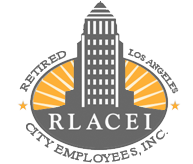
LACERS BOARD UPDATE
By Michael R. Wilkinson, LACERS Commissioner
Email: MikeWilkinson4LACERS@gmail.com
N
ow is a suitable time to turn the spotlight on private equity, one of LACERS’ largest investment classes. Private equity is a class that represents a part of a highly diversified investment portfolio.
Diversification is needed to reduce the risk of market downturns that may affect different investment types in different ways. For instance, one economic cycle may cause downturns to long-term bonds but boost stocks. Another cycle may give a boost to US stocks, but cause losses to foreign stocks in developed economies.
It is tempting to say that we should just research all the available data and put all our money out where it will get the highest returns with the lowest risk. Ah, spoiler alert here: There is no such investment. The trick is to spread out the investments among various investment classes and seek a long-term return matching our 7.0 percent assumed rate of investment return.
Looking at our most recent report from our private equity consultant, Aksia, private equity for the period ending June 30, 2024, LACERS had a target allocation to private equity of 16.0 percent. However, because of the timing of the investments, our actual allocation was 19.3 percent.
The private equity program returned (Internal Rate of Return, IRR) the following:
- 6.0 percent for 1 year,
- 6.8 percent for 3 years,
- 15.1 percent for 5 years,
- 12.7 percent for 10 years,
- 13.0 percent for 20 years, and
- 12.0 percent from inception.
The program’s returns exceeded the benchmark in all periods except for 10 years when it matched the benchmark and since inception where it trailed.
LACERS’ private equity program has been largely cash-flow positive over the period since 2006. Cash flow compares the money going into the investments with payouts as distributions from the investments. Increased capital calls and reduced payments have driven the cash-flow negative in recent years. The cash flow has been negative recently due to increased capital call (investments from LACERS) and reduced distributions.












